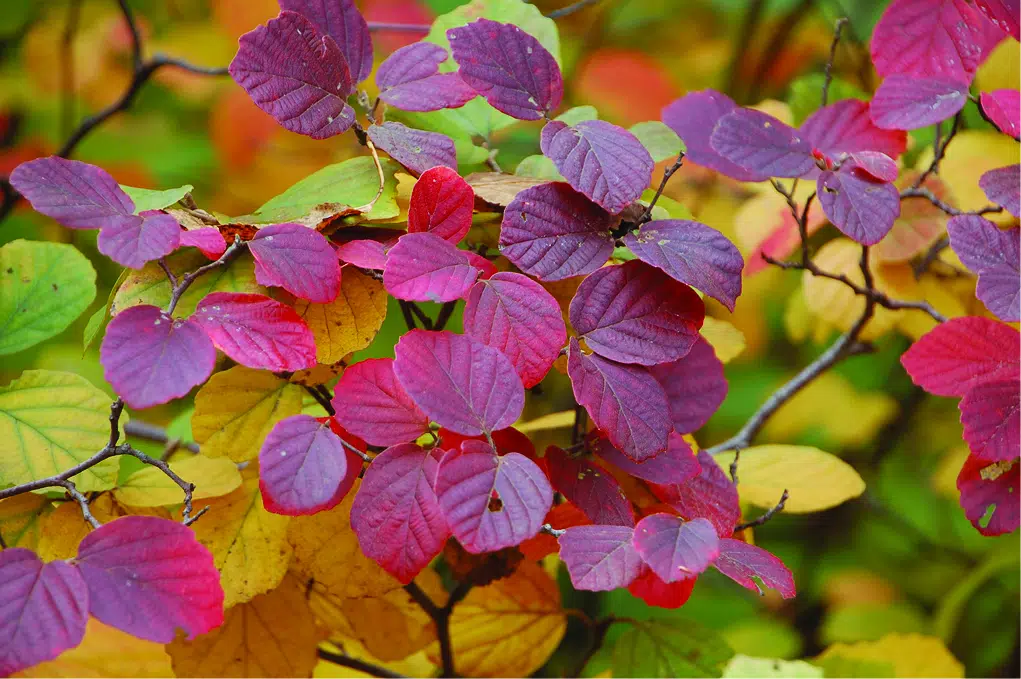Nature Profile
Plants
Fothergilla
Fothergilla

Fothergilla is a charming shrub native to the southeastern United States. The name of the genus, which has also become the common name, honors John Fothergill (1712-1780), a Quaker physician from Essex who introduced and promoted plants native to the United States in England. It has a relic common name of witch-alder and is a member of the witch-hazel family. There are two species, Fothergilla gardenii and Fothergilla major. Fothergilla gardenii is native to moist open pine woods, sphagnum swamps and bogs along the coastal plain from North Carolina to Alabama. Fothergilla major is native to riverbanks, dry slopes and ridge tops of the upper piedmont and in the southern Appalachians from North Carolina and Tennessee to Alabama with an outlying population in Arkansas.
Fothergilla has sweetly fragrant flowers that start blooming in late April or early May. For about three weeks the distinctive creamy-white whorls of stamens are showy. Bees and wasps serve as pollinators. The fall foliage is outstanding, starting as early as September, with yellow, orange and red hues in October and even early November. Plants given sun for a half day or more at the Arboretum exhibit orange and red foliage, while those in mostly shaded locations have excellent yellow fall foliage. Fruiting capsules ripen in September, popping open and expelling their shiny brown seeds about the same distance that you can shoot a watermelon seed by pinching it.
The leaf blades of Fothergilla major are typically 3’- 3 ½” long with as many as six to seven pairs of leaf veins, while those of F. gardenii are typically 2 – 2 ½” long with four to five pairs of leaf veins. Fothergilla major tends to grow significantly taller than F. gardenii. Hybrids between the two species are more difficult to distinguish especially if they are of the F2 generation. Usually
F x intermedia have leaf blades that are 2 ½ to 3” long with five to six pairs of leaf veins.
Garden origin hybrids of the two species, named Fothergilla x intermedia, are common in the nursery trade with clonal selections ‘Mount Airy’, ‘Blue Shadow’, ‘Beaver Creek’ and ‘Red Licorice’ having been grown at the Arboretum.
There are Fothergilla x intermedia planted in a mass on the southeast corner of Kirtland-Chardon and Sperry Roads obtained from Warner Nurseries of Willoughby Hills, Ohio in 1972 that now measure 6’-7.5’ tall, with those enjoying a bit more shade being in excellent condition. Other notable plantings of this hybrid can be found west and southeast of Blueberry Pond, and plantings in the Helen S. Layer Rhododendron Garden grew to 10’ tall before being renewal pruned – cut to the base in winter – to make them shorter.
Fothergilla x intermedia ‘Blue Shadow’ has blue-green foliage and may be seen north of Sherwin Pond in the Layer Rhododendron Garden near a sweetbay magnolia (Magnolia virginiana ‘Moonglow’). Fothergilla x intermedia ‘Mt. Airy’ is a selection made by Professor Michael Dirr from Mt. Airy Arboretum in Cincinnati, Ohio. It readily roots from cuttings and has excellent flowers and fall foliage with a slightly more diminutive stature of 5-6’. This is the cultivar I planted in my home landscape and after 10 years ‘Mt. Airy’ has not exceeded 3’.
Fothergilla can spread by stolons (root sprouts) and slowly form a patch. In the landscape, they can be used as specimens, in a border or for naturalizing. The Arboretum’s plants have at times been subject to deer browse but they are not one of their favorite foods. Although Fothergilla is not the easiest plant to cultivate in our gardens, it is certainly worth the effort.




